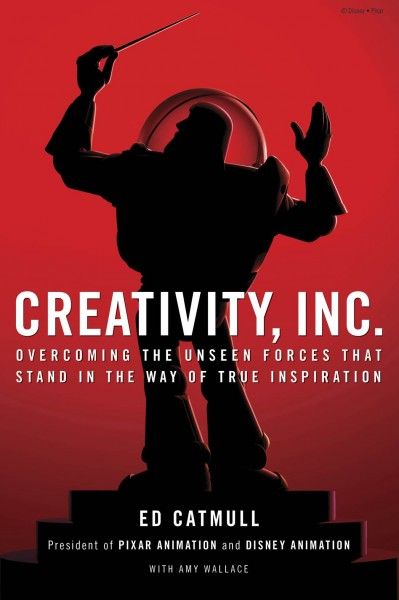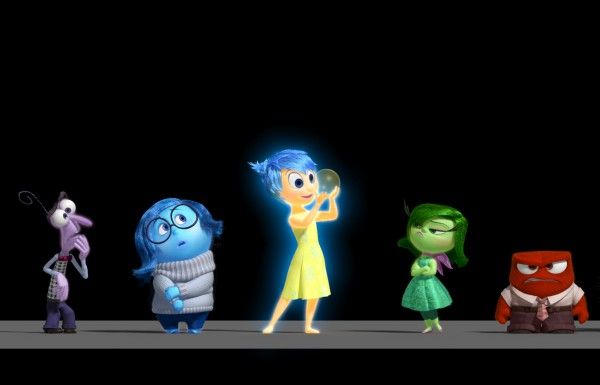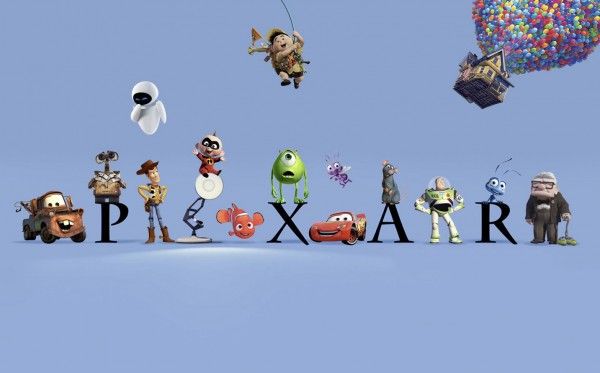Say what you will about some of the studio’s recent output, but Pixar's operating process has remained steadfastly left-of-center since it broke out big with Toy Story in 1995. Many expected the studio to move to Los Angeles or take on a more traditional method of production following its immense success, but Pixar maintains its central headquarters in Emeryville, California and sticks to its central, creativity-inspiring work philosophies. One of the most curious aspects of the studio is the Pixar Braintrust, a group of Pixar creatives that weighs in on all of the studio’s features on a regular basis with a brutal honesty.
In an excerpt from his upcoming book Creativity, Inc.: Overcoming the Unseen Forces That Stand in the Way of True Inspiration, Pixar President Ed Catmull offers a detailed, behind-the-scenes look at the Braintrust process, offering extensive examples from Toy Story 3 and director Pete Docter’s new film Inside Out. Read some of Catmull's insights after the jump.
In a lengthy and fascinating excerpt from Creativity, Inc. (via Fast Company), Catmull outlines the process for the Pixar Braintrust. The executive calls it their “primary delivery system for straight talk,” saying it meets every few months to assess each Pixar movie with the following premise: “Put smart, passionate people in a room together, charge them with identifying and solving problems, and encourage them to be candid.” It began organically with the group of people who wrote, directed, and edited Toy Story: Docter, John Lasseter, Andrew Stanton, Lee Unkrich, and Joe Ranft. From there, it evolved into a fluid group that has included directors, writers, and heads of story, but the utmost quality they’re looking for in Braintrust members is candor.
Before getting into specific examples, Catmull discusses the philosophy central to Pixar that assumes every creative, at one point or another, gets lost in his or her own project. The Braintrust is there to provide brutally honest notes from people who have perspective on the project and haven’t become lost in the minutiae. He believes the Braintrust is set apart by two criteria:
The first is that the Braintrust is made up of people with a deep understanding of storytelling, who usually have been through the process themselves. While the directors welcome critiques from many sources, they particularly prize feedback from fellow storytellers. The second difference is that the Braintrust has no authority. The director does not have to follow any of the specific suggestions. After a Braintrust meeting, it is up to him or her to figure out how to address the feedback. Giving the Braintrust no power to mandate solutions affects the dynamics of the group in ways I believe are essential.
Now Pixar is no stranger to replacing directors on projects (see: Ratatoullie, Cars 2, Brave), but it appears that that decision doesn’t come from the Braintrust. Presumably that’s made at the executive level.
In the excerpt, Catmull also gets into specifics about how the Braintrust has guided projects in the past. At one of the meetings, screenwriter Michael Arndt received feedback from Stanton that significantly altered Toy Story 3 at the point in the film where Woody rallies the other toys to turn on Lotso:
"In that draft," Michael told me, "I had Woody giving this big, heroic speech about what a mean guy Lotso was, and it changed everyone's mind about Lotso. But in the Braintrust, Andrew said, ‘I don't buy it. These toys aren't stupid. They know Lotso isn't a good guy. They've only aligned themselves with him because he's the most powerful.' " This sparked a pitched discussion, until Michael hit on an analogy: If you think of Lotso as Stalin and the other toys as his cowering subjects, then Big Baby, the bald-headed doll with one droopy eye who acts as Lotso's enforcer, was Stalin's army. A fix began to emerge. "If you flip the army, you get rid of Stalin," Michael said. "So the question was, What can Woody do that will turn Big Baby's sympathies against Lotso? That was the problem I faced."
Arndt eventually landed upon the backstory in which Losto played a hand in Big Baby’s abandonment by their owner, but it was the Braintrust meeting that led him there.
Another example given has to do with Inside Out, which Pete Docter is directing for a 2015 release. Docter screened some scenes from the project for the Braintrust, which introduced the film’s characters: anthropomorphized emotions living in a young girls’ brain. Brad Bird was one of the members of the Braintrust at this meeting, and he offered his candid critique:
Brad is a born rebel who fights against creative conformity in any guise. So it was no surprise that he was among the first to articulate his worries. "I understand that you want to keep this simple and relatable," he told Pete, "but I think we need something that your audience can get a little more invested in."
Bird was followed by Stanton, who told Docter he needed to further develop and settle on the rules of his imagined world. The Finding Nemo director added that the movie is about the inevitability of change and of growing up, at which point Bird chimed in:
"A lot of us in this room have not grown up--and I mean that in the best way," he said. "The conundrum is how to become mature and become reliable while at the same time preserving your childlike wonder. People have come up to me many times, as I'm sure has happened to many people in this room, and said, ‘Gee, I wish I could be creative like you. That would be something, to be able to draw.' But I believe that everyone begins with the ability to draw. Kids are instinctively there. But a lot of them unlearn it. Or people tell them they can't or it's impractical. So yes, kids have to grow up, but maybe there's a way to suggest that they could be better off if they held on to some of their childish ideas.
Bird also praised the ambitiousness of the idea, and after each Braintrust meeting a film’s producer will distill the input into the main points gleaned from the session.
Jonas Rivera, the producer of Pete's film, tries to make that painful process easier by "headlining" the main points of a Braintrust session--distilling the many observations down to a digestible takeaway. Once this meeting wrapped up, this is what he did for Pete, ticking off the areas that seemed the most problematic, reminding him of the scenes that resonated most. "So what do we blow up?" Jonas asked. "And what do you love? Is what you loved about the film different now than it was when we started?"
"The way the movie opens," Pete responded, "I love."
Jonas raised his hand in a salute. "Okay, that's the movie, then," he said. "How we set up the story has to handshake with that."
"I agree," Pete said. They were on their way.
This is a fascinating look into the now-mythologized “Pixar Braintrust”, and I’m eager to dig through Catmull’s full book to see what other insights about the company can be gleaned. The book doesn’t hit stores until April 8th, but head over to Fast Company to read the full excerpt, which has much more on the Braintrust and Catmull's business philosophy.





